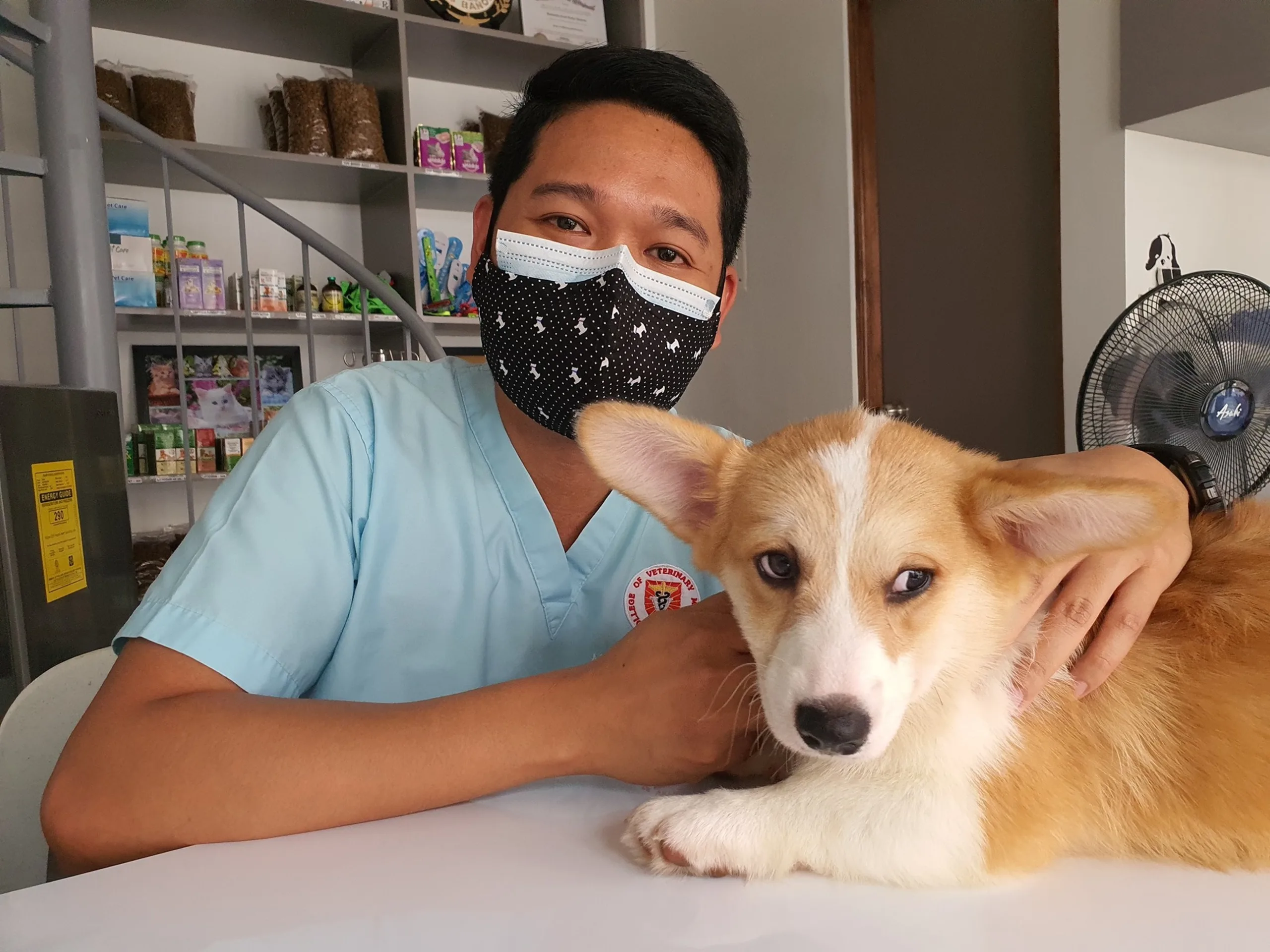Introduction of What Causes Urethral Prolapse in Male Dogs
Urethral prolapse is a relatively rare but distressing condition that can affect male dogs. It occurs when the urethra, the tube that carries urine from the bladder to the outside of the body, protrudes or becomes everted from its normal position. Understanding the causes, symptoms, and treatment options for urethral prolapse is crucial for pet owners to ensure the well-being of their furry companions.
When a male dog experiences urethral prolapse, it can be a cause of great discomfort and pain. Immediate veterinary attention is necessary to alleviate the dog’s distress and prevent any potential complications. By familiarizing ourselves with the causes and recognizing the symptoms, we can promptly seek appropriate treatment and help our canine friends recover.
In the following sections, we will delve deeper into the causes of urethral prolapse.
Understanding Urethral Prolapse
The male dog’s urinary system is a complex network responsible for eliminating waste from the body. At the heart of this system lies the urethra, a vital component that carries urine from the bladder to the outside world. To comprehend urethral prolapse, it is essential to grasp the anatomy and function of this system.
The urethra in male dogs serves a critical role in urinary function. It begins at the base of the bladder and travels through the pelvic region before exiting through the penis. Its primary function is to allow the passage of urine during urination.
Urethral prolapse occurs when the inner lining of the urethra protrudes or everts, becoming visible or even hanging out of the penis. This can happen due to various factors, such as hormonal imbalances, preexisting conditions, or trauma.
Although urethral prolapse is relatively rare in male dogs, it is a distressing condition that requires immediate veterinary attention. The discomfort and pain experienced by dogs with this condition can be significant. Recognizing the signs of urethral prolapse and seeking prompt veterinary care is crucial to alleviate the dog’s distress and prevent any complications that may arise.
Causes of Urethral Prolapse
Urethral prolapse refers to the protrusion or eversion of the urethral mucosa through the external urethral opening (meatus). While the exact cause of urethral prolapse is not always clear, several factors can contribute to its development. Let’s explore each of the mentioned causes in more detail:
- Hormonal imbalances: Hormonal changes, particularly a decrease in estrogen levels, can weaken the tissues supporting the urethra. Estrogen plays a role in maintaining the integrity and elasticity of the connective tissues in the genitourinary tract. Therefore, hormonal imbalances, such as those that occur during menopause or hormonal therapy, can lead to the weakening of the urethral tissues, making them more prone to prolapse.
- Preexisting conditions: Certain underlying medical conditions can increase the risk of urethral prolapse. These conditions include:
- Urinary tract infections (UTIs): Frequent or recurrent UTIs can cause inflammation and irritation of the urethra, leading to tissue damage and weakening. Over time, this can contribute to urethral prolapse.
- Prostate enlargement (benign prostatic hyperplasia): In men, an enlarged prostate can put pressure on the urethra, leading to obstruction and weakening of the surrounding tissues. This increased pressure can contribute to the development of urethral prolapse.
- Chronic cough or constipation: Conditions that cause chronic coughing or straining during bowel movements can exert pressure on the pelvic floor muscles. This can weaken the supportive structures of the urethra and increase the risk of prolapse.
- Trauma or injury: Trauma or injury to the perineal region can damage the supporting structures of the urethra, leading to urethral prolapse. This can occur due to childbirth trauma, forceful insertion of objects into the urethra, or pelvic fractures. Such trauma weakens the tissues and disrupts the normal anatomical position of the urethra, making prolapse more likely.
- Breeds at risk: While urethral prolapse can occur in any dog breed, some breeds have been found to be more predisposed to this condition. These include:
- Bulldogs
- Boston Terriers
- Pugs
- Boxers
- Shih Tzus
- Yorkshire Terriers
It’s important to note that the predisposition of certain breeds to urethral prolapse may be associated with genetic factors or anatomical differences in the pelvic region. However, the occurrence of urethral prolapse is not limited to these breeds and can affect dogs of any breed.
It’s worth mentioning that these causes are not exhaustive, and other factors or combinations of factors may contribute to the development of urethral prolapse. It is important to seek medical attention for an accurate diagnosis and appropriate treatment.

Symptoms of Urethral Prolapse
Symptoms of urethral prolapse can vary depending on the severity of the condition. Here are some common symptoms associated with urethral prolapse:
- Swollen or protruding urethra: In cases of urethral prolapse, the urethral mucosa protrudes through the external urethral opening (meatus) and may appear red, swollen, or elongated. The exposed tissue may be sensitive and can be easily seen upon examination. The extent of protrusion can vary, ranging from a small, pink mass to a more significant bulge.
- Discomfort and pain: Dogs with urethral prolapse may experience discomfort and pain. This can manifest in various ways, including:
- Difficulty urinating: The protruding tissue can obstruct the flow of urine, making it difficult for the dog to urinate properly. This may result in straining, frequent attempts to urinate, or prolonged squatting without producing much urine.
- Licking the affected area: Dogs may exhibit increased licking or grooming of the protruding tissue. This behavior is often an attempt to alleviate discomfort but can also lead to further irritation and inflammation.
- Signs of distress: Dogs in pain or discomfort may display signs of distress, such as restlessness, whimpering, or reluctance to move or engage in usual activities.
- Blood in urine: Urethral prolapse can cause bleeding, leading to the presence of blood in the urine (hematuria). The blood may appear as red streaks or discoloration in the urine, and it should not be ignored. Hematuria can indicate injury to the urethral tissues or underlying complications, and prompt veterinary attention is necessary.
It’s important to note that these symptoms are not exclusive to urethral prolapse. They can also be associated with other urinary tract conditions. If you observe any of these signs in your dog, it is recommended to consult a veterinarian for a proper diagnosis and appropriate treatment.
Diagnosis and Treatment
Diagnosis and treatment of urethral prolapse involve veterinary intervention. Here are the typical steps taken for diagnosis and treatment:
- Veterinary examination: The veterinarian will begin by conducting a thorough physical examination of your dog. They will examine the protruding urethral tissue, assess the overall condition of the dog, and inquire about any symptoms or recent history. In some cases, additional diagnostic tests may be recommended to confirm the diagnosis or rule out other underlying conditions. These tests may include urinalysis, blood tests, or imaging studies like X-rays or ultrasound.
- Manual reduction: If the prolapsed urethra is not severely damaged and the condition is diagnosed early, the initial treatment approach involves manually reducing the prolapsed tissue back into its normal position. The veterinarian will carefully and gently push the protruding tissue back into the urethra, often using lubrication or local anesthesia to ease the process. This procedure is typically done under sedation or anesthesia to minimize discomfort.
- Surgical intervention: If manual reduction is not successful or if the prolapse recurs, surgical intervention may be necessary. The specific surgical technique used will depend on the severity of the prolapse and other individual factors. Surgical options may include procedures to remove excess tissue, reinforce the supporting structures around the urethra, or repair any underlying issues contributing to the prolapse. Your veterinarian will discuss the recommended surgical approach and its associated risks and benefits.
- Post-treatment care: After either manual reduction or surgical intervention, post-treatment care is crucial for successful recovery. Your veterinarian will provide specific instructions tailored to your dog’s situation. These instructions may include:
- Restricted activity. Your dog may need to avoid strenuous activities, jumping, or running during the recovery period.
- Medications: Pain medication, antibiotics to prevent infection, and anti-inflammatory drugs may be prescribed to manage pain, reduce inflammation, and prevent complications.
- E-collar: To prevent your dog from licking or interfering with the treated area, an Elizabethan collar (cone) may be recommended.
- Follow-up appointments: Regular follow-up appointments will be necessary to monitor the healing process, remove any sutures if applicable, and make any necessary adjustments to the treatment plan.
It’s important to closely follow your veterinarian’s recommendations and contact them if you notice any worsening of symptoms, recurrence of the prolapse, or any concerns during the recovery period. With appropriate diagnosis, treatment, and post-treatment care, the prognosis for urethral prolapse in dogs is generally favorable.
FAQs About What Causes Urethral Prolapse in Male Dogs
- What causes a dog’s urethral prolapse?
The exact cause of urethral prolapse in dogs is not always clear. Hormonal imbalances, preexisting conditions, trauma or injury, and certain breeds being predisposed can contribute to its development. - What causes urethral prolapse in men?
Similar to dogs, urethral prolapse in men can be caused by hormonal imbalances, chronic cough or constipation, trauma or injury. Certain medical conditions like urinary tract infections or prostate enlargement. - How do you fix a prolapsed urethra in male dogs?
Treatment for a prolapsed urethra in male dogs involves manual reduction and surgical intervention if necessary. The veterinarian will manually push the tissue back into place, and surgery may be required if manual reduction fails or if the prolapse recurs. - Can male dogs get prolapse?
Yes, male dogs can experience urethral prolapse, although it is more commonly seen in females. The causes and treatment options for male dogs with urethral prolapse are similar to those in females.
Conclusion on What Causes Urethral Prolapse in Male Dogs
It is important for pet owners to be aware of the signs of urethral prolapse in male dogs and to seek prompt veterinary attention if any symptoms are observed. Urethral prolapse can be caused by hormonal imbalances, preexisting conditions, trauma or injury, and certain breeds being predisposed. Symptoms may include a swollen or protruding urethra, discomfort and pain during urination, and blood in the urine.
Treatment options for urethral prolapse include manual reduction, where the protruded tissue is carefully pushed back into place, and surgical intervention if manual reduction is not successful or if the prolapse recurs. Post-treatment care, including restricted activity, medications, and follow-up appointments, is crucial for successful recovery.
Regular veterinary check-ups are essential for maintaining the overall health of your pet and for detecting any potential issues, such as urethral prolapse, early on. By being vigilant and proactive in your pet’s care. You can help ensure their well-being and provide them with the necessary treatment if any medical conditions arise.
Click here for more
